MỌI NGƯỜI ƠI GIÚP MÌNH VỚI 🥲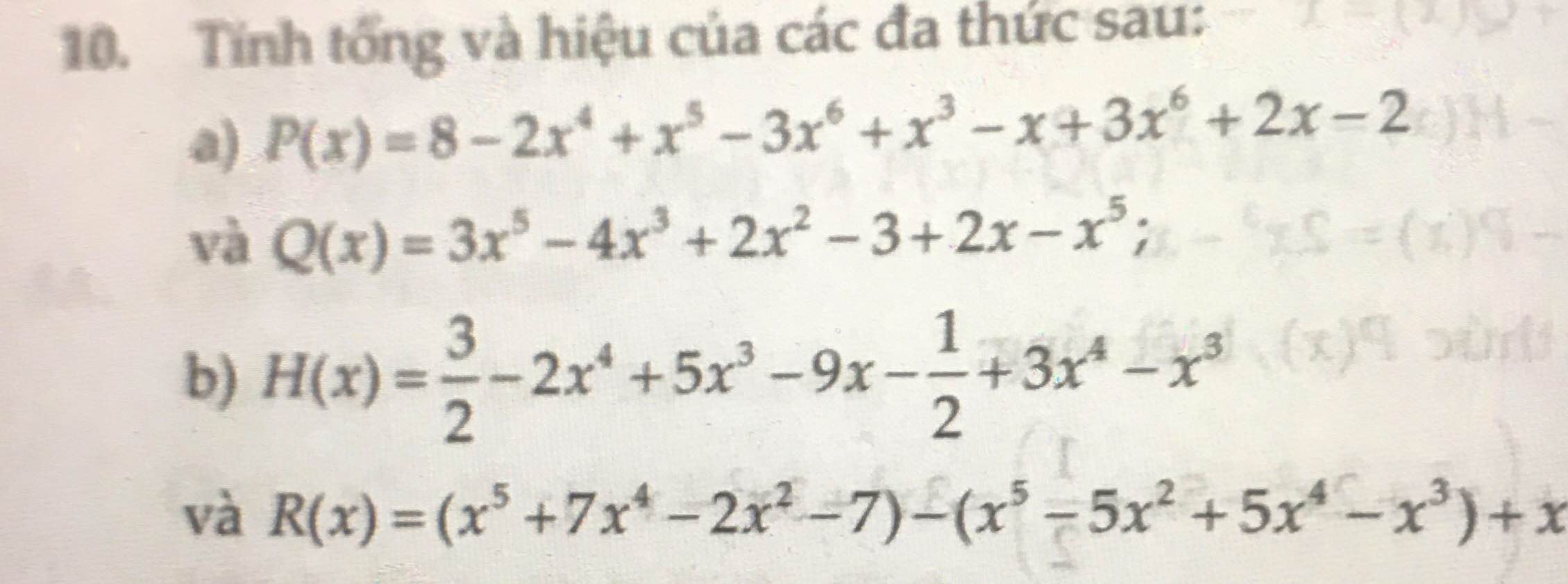
Hãy nhập câu hỏi của bạn vào đây, nếu là tài khoản VIP, bạn sẽ được ưu tiên trả lời.


Kiểu gen F2: AA, Aa và aa
TH1: F2: AA. ( hoa đỏ). x. Aa( hoa đỏ)
Gf2 A. A,a
F3: 1AA:1Aa(100% hoa đỏ)
TH2: F2 :AA( hoa đỏ). x. AA( hoa đỏ)
GF2: A. A
F3. :AA(100% hoa đỏ)
TH3: F2 : AA( hoa đỏ). x. aa( hoa trắng)
GF2 A. a
F3. Aa(100% hoa đỏ)
TH4: F2 Aa( hoa đỏ). x. Aa( hoa đỏ)
GF2 A,a. A,a
F3: \(\dfrac{1}{4}\)AA:\(\dfrac{1}{2}\)Aa:\(\dfrac{1}{4}\)aa
Kiểu hình:75%hoa đỏ:25% hoa trắng
TH5: F2. Aa( hoa đỏ). x. aa( hoa trắng)
GF2. A,a. a
F3. \(\dfrac{1}{2}Aa\):\(\dfrac{1}{2}aa\)
Kiểu hình:50% hoa đỏ:50% hoa trắng
TH6: F2: aa( hoa trắng). x. aa( hoa trắng)
GF2. a. a
F3: aa(100% hoa trắng)

Xét ΔAHB vuông tại H và ΔAHC vuông tại H có
AB=AC
AH chung
Do đó: ΔAHB=ΔAHC
Suy ra: HB=HC
=>AH là đường trung tuyến
=>AH là đường trung trực
=>AH là phân giác

\(lim\dfrac{2\sqrt{7n^2-2n}}{3n+2}=lim\dfrac{2\sqrt{n^2\left(7-\dfrac{2}{n}\right)}}{3n+2}=lim\dfrac{2n\sqrt{7-\dfrac{2}{n}}}{n\left(3+\dfrac{2}{n}\right)}\)
\(=lim\dfrac{2\sqrt{7-\dfrac{2}{n}}}{3+\dfrac{2}{n}}=\dfrac{2\sqrt{7}}{3}\) \(=\dfrac{a\sqrt{7}}{b}\)
Suy ra : a/b = 2/3 => a - b = -1

Câu 2.
Nhiệt lượng bếp tỏa ra trong thời gian \(t=3min=180s\) là:
\(Q=UIt=RI^2t=60\cdot2,5^2\cdot180=675000J\)
Câu 3.
\(I_{Đ1}=\dfrac{U_{Đ1}}{R_{Đ1}}=\dfrac{6}{6}=1A\)
\(I_{Đ2}=\dfrac{U_{Đ2}}{R_{Đ2}}=\dfrac{1,5}{8}=\dfrac{3}{16}A\)
\(I_b=I_{Đ1}-I_{Đ2}=1-\dfrac{3}{16}=\dfrac{13}{16}A\)
\(R_b=\dfrac{U_b}{I_b}=\dfrac{1,5}{\dfrac{13}{16}}=\dfrac{24}{13}\Omega\)



1 If I were you I would recycle these plastic carrier bags
2 The pilots suddenly struck, so all flights had to be cancelled
3 The polluted environment causes the death of birds and plants
4 The contaminated food leads to people's poor health

Câu 4:
Xét tam giác ABC có
D là trung điểm của AC(gt)
E là trung điểm của BC(gt)
=> DE là đường trung bình của tam giác ABC
\(\Rightarrow AB=2DE=2.15=30\left(m\right)\)
Câu 5:
Xét hình thang ABCD có:
E là trung điểm của AD(gt)
F là trung điểm của BC(gt)
=> EF là đường trung bình của hình thang ABCD
\(\Rightarrow EF=\dfrac{AB+CD}{2}\Rightarrow45=\dfrac{32+x}{2}\Rightarrow x=45.2-32=58\left(cm\right)\)
Câu 6:
Xét hình thang AMEC có:
B là trung điểm AC(AB=BC)
BN//CE//AM( cùng vuông góc AD)
=> N là trung điểm ME
=> ME=2.MN=70(cm)
Xét hình thang BNFD có:
C là trung điểm BD(BC=CD)
CE//BN//DF(cùng vuông góc AD)
=> E là trung điểm NF
=> EF=EN=MN=35cm
Ta có: MF = EF+ME=70+35=105(cm)
Câu 5:
Hình thang ABCD có
E là trung điểm của AD
F là trung điểm của BC
Do đó: EF là đường trung bình của hình thang ABCD
Suy ra: \(EF=\dfrac{AB+CD}{2}\)
\(\Leftrightarrow x+32=90\)
hay x=58cm
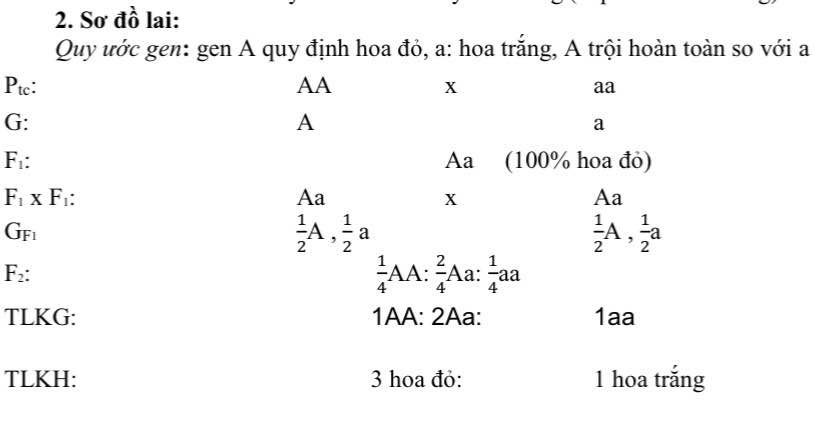


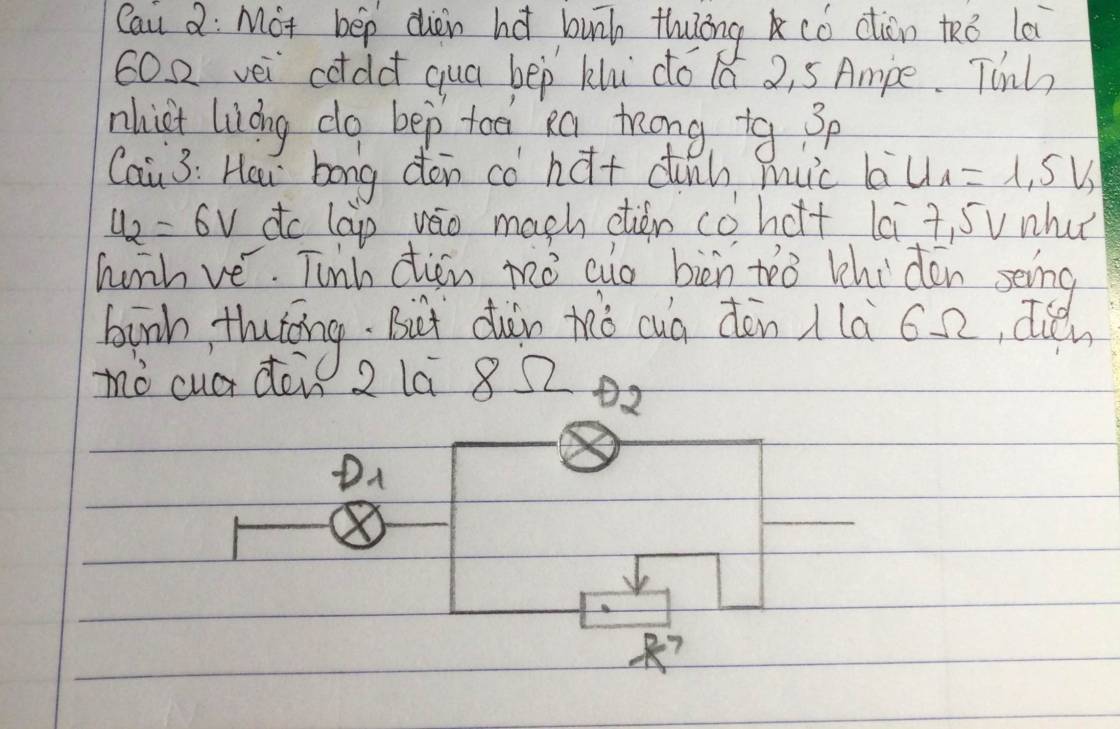




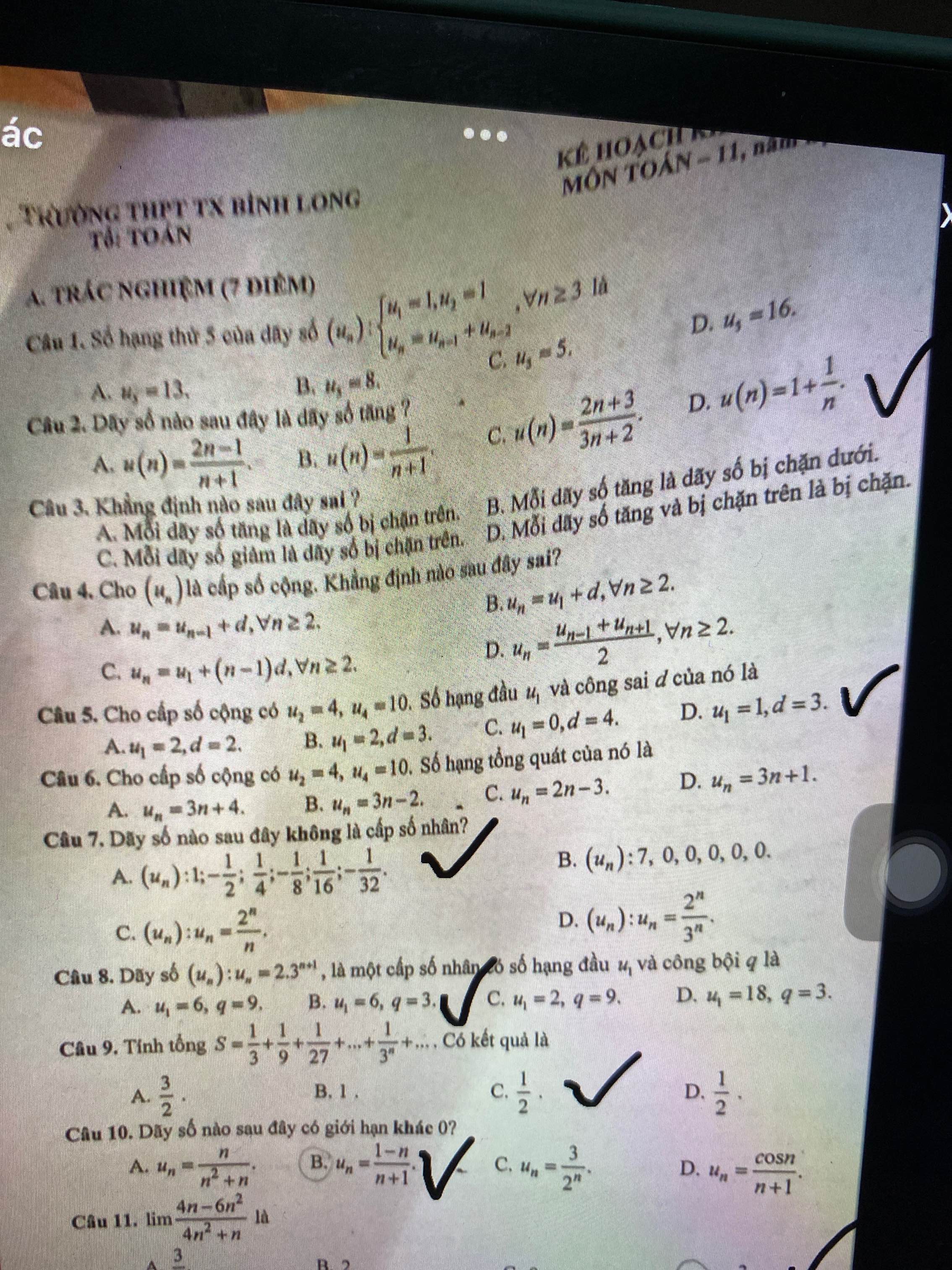
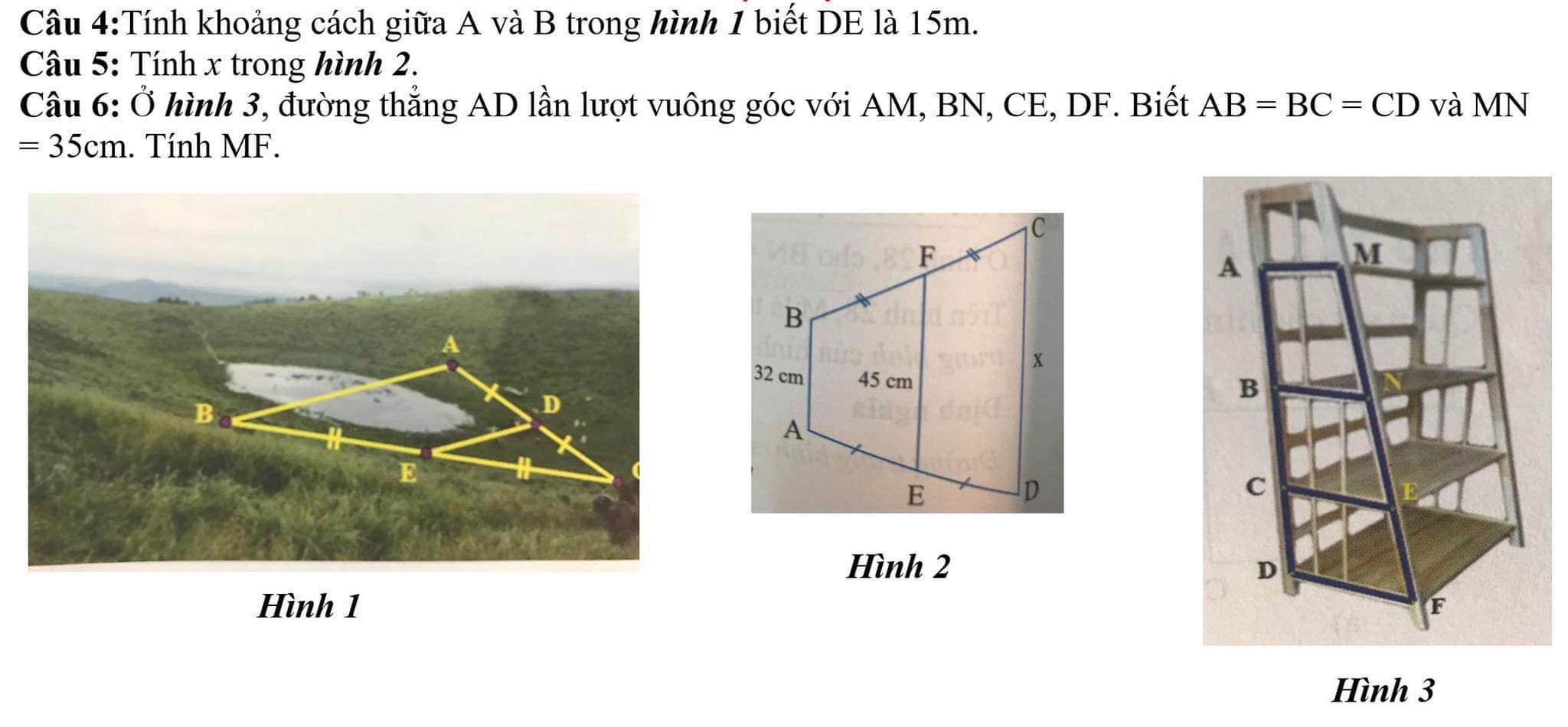
C gửi bài nha!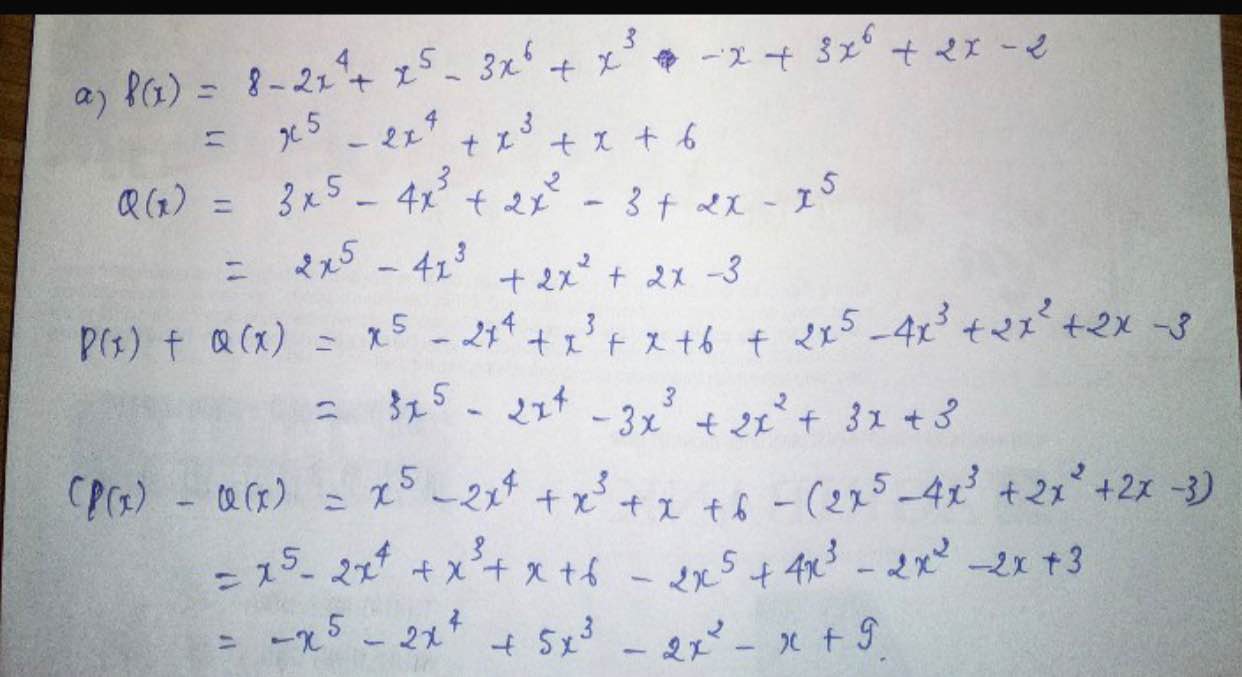
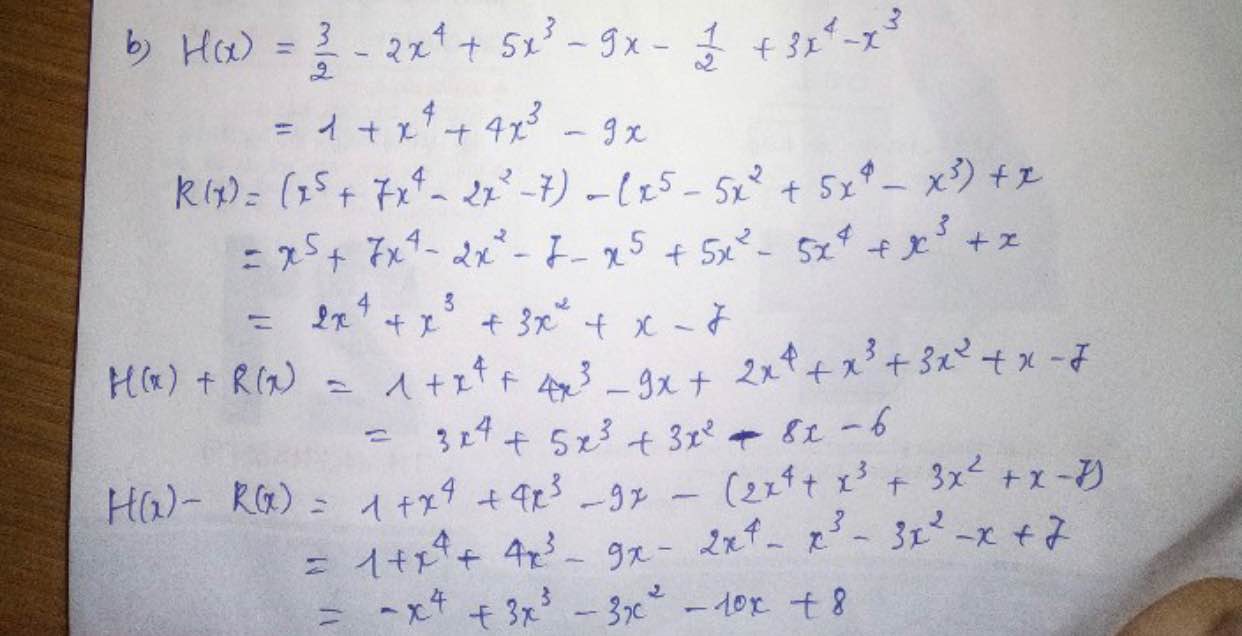
a) Ta có: \(P\left(x\right)=8-2x^4+x^5-3x^6+x^3-x+3x^6+2x-2\)
\(=x^5-2x^4+x^3+x+6\)
Ta có: \(Q\left(x\right)=3x^5-4x^3+2x^2-3+2x-x^5\)
\(=2x^5-4x^3+2x^2+2x-3\)
Ta có: \(P\left(x\right)+Q\left(x\right)\)
\(=x^5-2x^4+x^3+x+6+2x^5-4x^3+2x^2+2x-3\)
\(=3x^5-2x^4-3x^3+2x^2+3x+3\)
Ta có: P(x)-Q(x)
\(=x^5-2x^4+x^3+x+6-2x^5+4x^3-2x^2-2x+3\)
\(=-x^5-2x^4+5x^3-2x^2-x+9\)